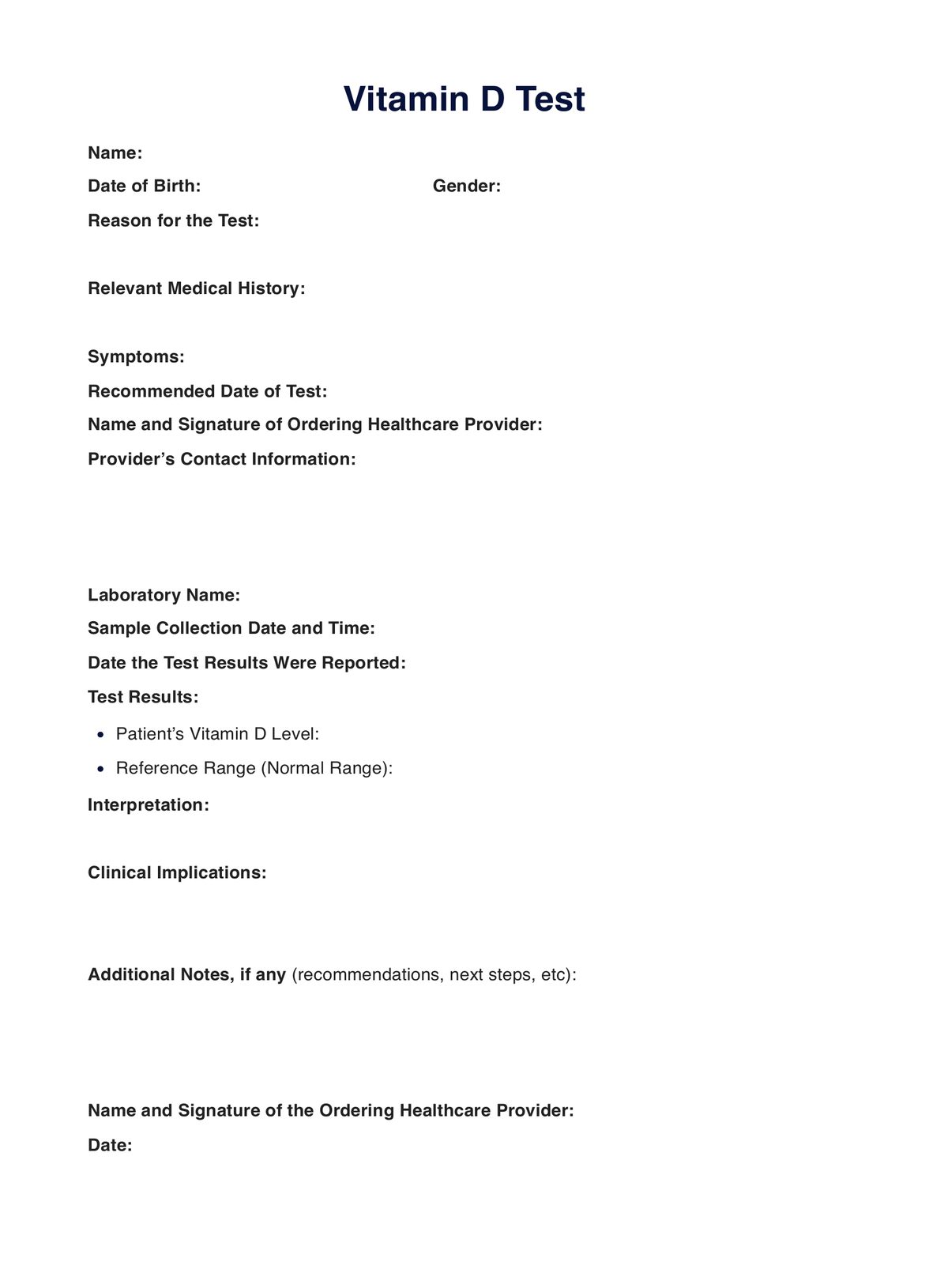General practitioners and nurses typically request a Vitamin D test.

Learn more about the importance of the Vitamin D test, its uses, general result interpretations, and more with our short guide.
General practitioners and nurses typically request a Vitamin D test.
They are commonly requested and used when the referring physician suspects that the patient has a Vitamin D deficiency based on their history or symptoms and when monitoring the effectiveness of a treatment.
Collecting a sample for the Vitamin D Test will only take a few minutes. However, processing the sample can take several hours to days, depending on the laboratory.
EHR and practice management software
*No credit card required
Free
$0/usd
Unlimited clients
Telehealth
1GB of storage
Client portal text
Automated billing and online payments